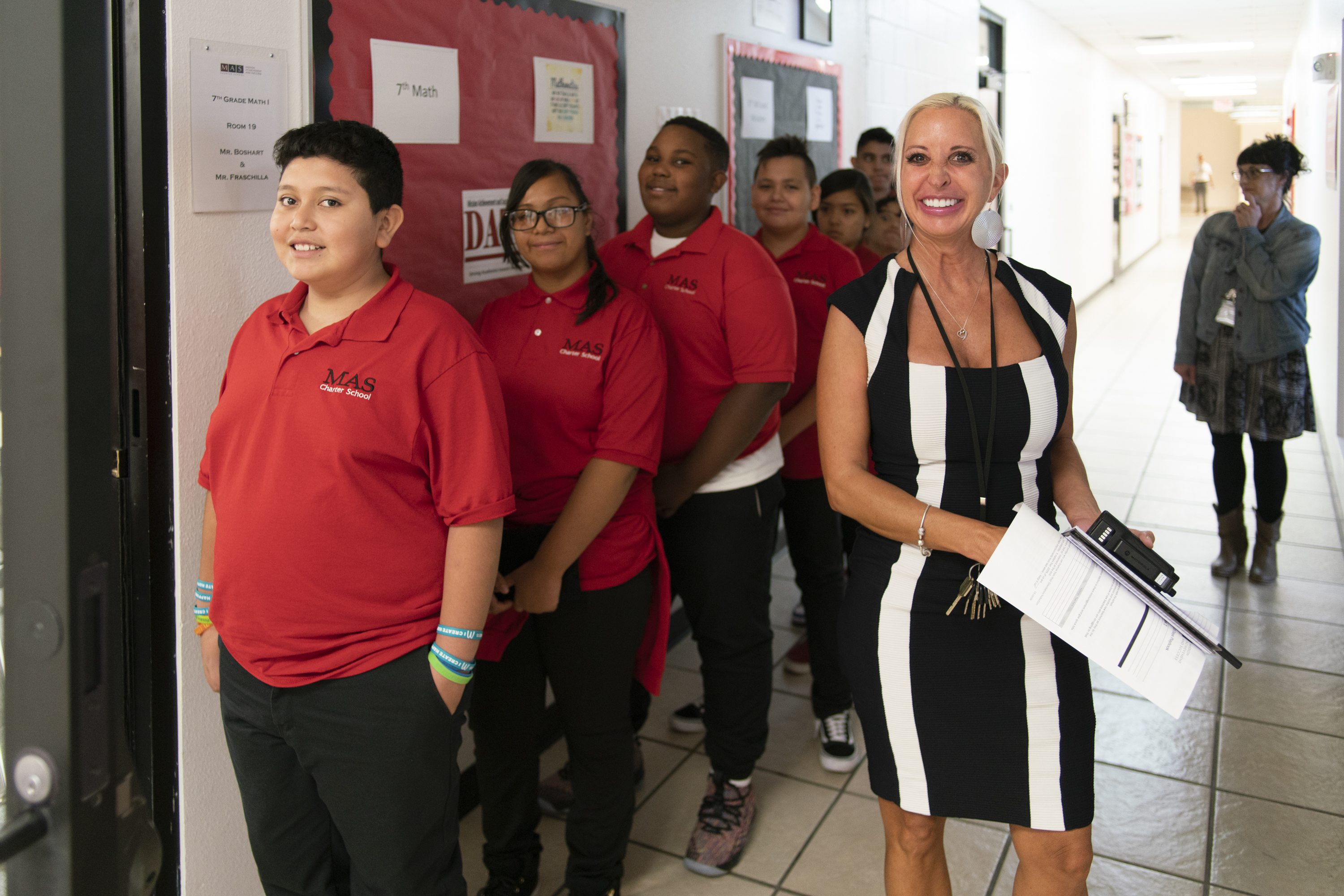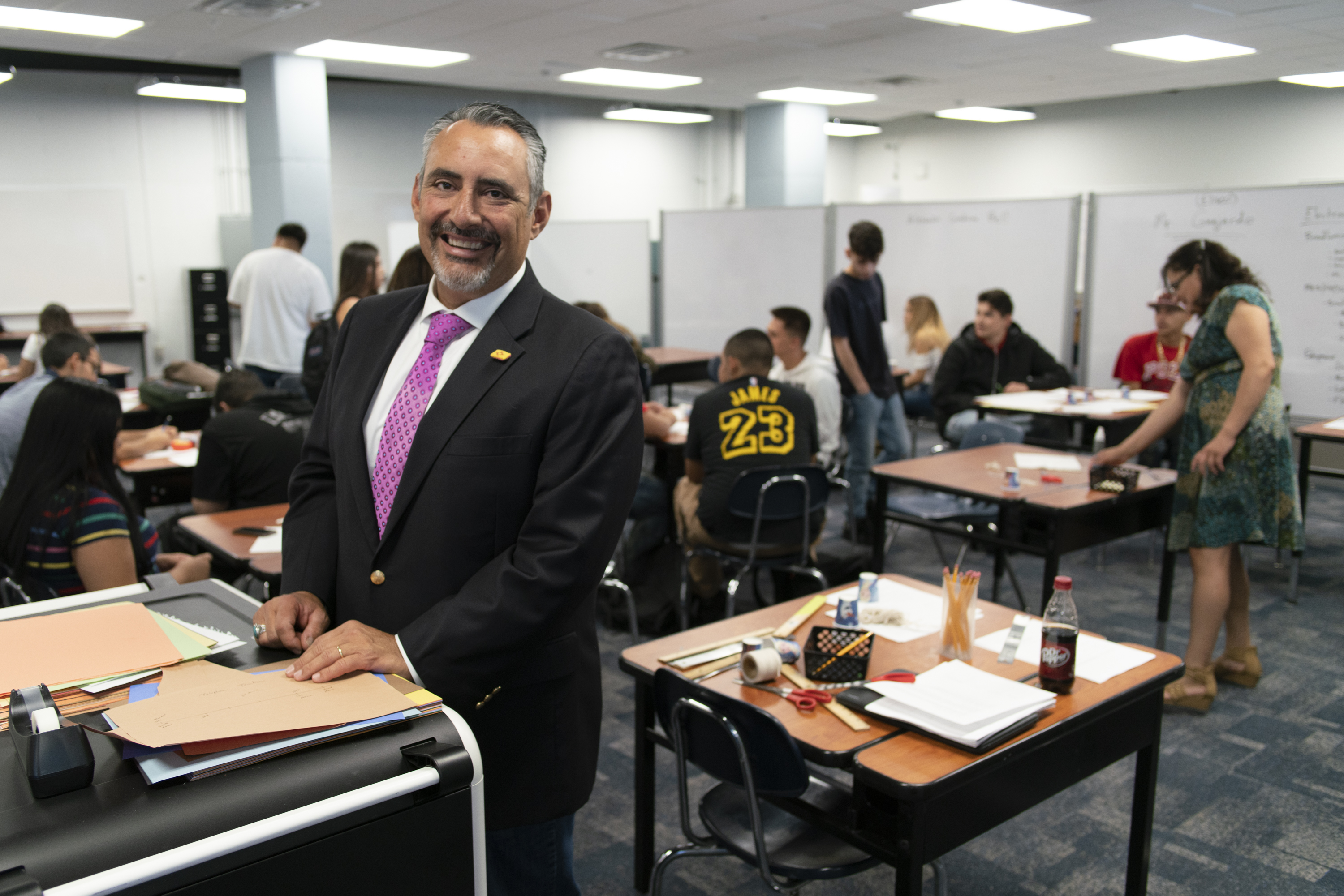Sara Tafoya never pictured herself as one of New Mexico’s at-risk students. She came from a supportive, college-educated family in Albuquerque, had once earned good grades, and entertained dreams of going to college and becoming a physical therapist.
But in her sophomore year, Tafoya “attracted bad situations,” skipping classes – sometimes for weeks at a time. By the time she found out she was pregnant at age 15, she faced a hurdle that typically derails a girl’s education. Pregnancy is the leading cause for dropping out of school among adolescent girls in New Mexico; that, along with widespread poverty and childhood trauma, helps explain the state’s sky-high dropout rate of 29 percent.
Tafoya might have become part of that statistic as well if not for ACE Leadership High School Academy. The Albuquerque charter school bills itself as a “re-engagement school,” part of a national trend committed to addressing the problems of unemployment and low education achievement among at-risk students.
ACE is part of the Leadership Schools Network, a group of charter schools that caters to students who have dropped out – or, like Tafoya are at risk of dropping out — of traditional public schools. All four Leadership schools (ACE, Siembra, Technology, and Health) offer career-specific curricula in partnership with local employers.
Academics in the traditional sense take low priority, and standardized testing is deliberately de-emphasized.
“Why would we bring kids who have been failing at taking tests for 11 years or who are behind in credits or dropped out — and bring them back to a test factory?” demands Tony Monfiletto, the education advocate who in 2013 founded the controversial program. “That makes no sense. That doesn’t make the city any better off, it doesn’t make the community any better off.”
Before turning his hand to the Leadership Schools Network, Monfiletto cofounded and directed Amy Biehl High School, a respected high-performance college prep charter in downtown Albuquerque. But within a few years of his tenure, he concluded a strong focus on academic achievement and college readiness did not match the reality of many of its students.
“A lot of the students just weren’t able to do what we were asking of them, even with all the support we were giving them,” he says. “Many of [them] have super complicated lives. They work late at night, they often live on their own or with absent parents, they don’t have structures in their lives that allow them to be able to get through school.”
Monfiletto saw a connection between the state’s low graduation rate and its high unemployment among young people. That connection was confirmed by a 2016 Brookings Institution analysis: The unemployment rate for 20- to 24-year-olds in New Mexico who didn’t complete high school is nearly 50 percent. That same analysis placed Albuquerque among the 10 cities with the lowest employment rates nationally among residents aged 25-54.
“That’s just a real tragedy for the community,” Monfiletto says. “All those kids with nowhere to go and nothing to do.”
The Leadership Schools and other re-engagement schools around the nation have brought thousands of young people back into the public school system, furnished them with high school diplomas and, in many cases, placed them on a trajectory towards a career or higher education.
The approach has shown positive results: 97 percent of graduates from ACE and Health Leadership High Schools were employed after graduation or went on to college, according to the program’s data tracking. (Siembra and Technology Leadership Schools haven’t yet graduated their first class.)

Sara Tafoya, now mother to a 2-year-old boy, is one of those graduates. After taking an extra year of classes, she graduated from ACE Leadership High School in May. A talkative and energetic 19-year-old, she works as a visitor educator at Explora, the children’s museum in Albuquerque.
“Having to prove that you know how to work in the real world, getting hands-on training to help you be in the workforce was really encouraging,” Tafoya says, adding that the focus on accommodating the needs of students with children, including an option to take classes at night, proved especially attractive for someone in her position.
This year, she starts studying for a degree in physical therapy at Central New Mexico Community College — the goal she set for herself as a 15-year-old.
Program criticism
But the program is not without its critics. Measured by standardized test scores, the Leadership Schools’ performance is abysmal. Only about 5 percent of students test at grade level for reading or math, among the lowest scores in the state.
“The re-engagement school model is awesome,” says Amanda Aragon, who worked as director of strategic outreach for the New Mexico Public Education Department before taking the helm of NewMexicoKidsCan, an education advocacy group. “But they have to be able to read and they have to be able to do math. And we need some evidence that they can struggle through the learning process.
“When I see schools with math or reading proficiency of less than 5 percent, I think that’s concerning, and I think employers would find that concerning.”
Public Education Department secretary Christopher Ruszkowski has also signaled his disdain. Last year, he called for the closure of three Leadership Schools. The schools narrowly escaped that closure by leaving the state system and re-chartering under Albuquerque Public Schools.
Another approach
The Leadership Schools’ approach stands in stark contrast to alternative schools that focus on academic performance and college prep.
Mission Achievement and Success (MAS), a charter in Albuquerque that primarily serves at-risk students, is a prime example. Since its founding in 2012, MAS has focused on closing the academic achievement gap among low-income students, many of whom have become disengaged from the public school system.
“When you have a sixth-grader who has experienced failure for seven years, there’s bit of an apathy towards education,” says MAS principal JoAnn Mitchell. “Some of it’s a learned helplessness, a belief that ‘I can’t do it, I’m not capable of learning those things.’”
MAS has impressed observers with its performance: 100 percent of its high school graduates last year — half of whom were the first in their families to earn a diploma — went either on either to college or the military.

School officials say those rates are the product of a hard focus on the value of higher education in the classroom. University banners and logos adorn the hallways. Pennants of faculty members’ alma maters hang above office doors. Every year, students go on all-expenses-paid field trips to universities across New Mexico.
Discipline is drilled into students throughout their tenure at MAS. Students walk in silent single-file lines between classes and elementary students sit with their hands folded on their desks — a “warm strict,” as Mitchell describes it.
Mitchell, who grew up in poverty in upstate New York, hones a “laser-like focus on academic achievement,” with teachers closely monitoring students to Common Core State Standards.
The resulting scores have earned the school steady A’s in district report cards. MAS now has a waiting list of about 700 students and is expanding to a second campus in Albuquerque.
The charter debate
The idea of relying on charter schools to make education work for at-risk students is, in itself, controversial. Their proliferation has long drawn the ire of teachers’ unions and supporters of traditional public schools.
Because New Mexico’s school funding formula is based on a per-student calculation, each student who transfers to a charter means a financial loss to the district school they left behind. It’s an especially pronounced problem in rural districts, where loss of funding can lead to the closure of advanced classes, arts programs and extracurricular activities.
And charter schools can be unstable. In the past five years, 14 charters have closed across New Mexico, their licenses often revoked due to poor performance. Three have closed so far in 2018 alone.
Advocates point to these closures as a sign of increased accountability. Underperforming public schools can’t be as easily shut down due to bad academic performance, they say.
Critics argue the closure of a school has been shown to have continuing, negative impacts on students, often including decreased academic performance and emotional stress.
Further chaffing critics is the fact that charter schools, which operate without school boards or other structural constraints shared by traditional public schools, can restructure their finances to pay teachers more, often luring talent — along with more engaged students and parents — away from neighborhood public schools.

“It has been a bit of a brain drain,” says Santa Fe Public Schools Superintendent Veronica Garcia, adding that the students and parents who leave are often the ones struggling district schools need most. Of course, that problem is less pronounced in charters such as MAS that cater to at-risk students.
Despite her qualms, Garcia is examining ways to adopt some of the Leadership Schools’ strategies for serving at-risk students.
And despite the criticism, the growth of charters in New Mexico is a trend that’s likely to continue. The Public Education Department is set to expand the presence of charter schools — which currently account for slightly over 10 percent of public schools in the state — with help from a $22.5 million grant from the U.S. Department of Education. This year, PED began offering its own grants to help charters replicate.
“Charters have their place,” Garcia says. “They meet a need, and I do think they spur competition. But I don’t think the intent [in creating a charter system] was to decimate the traditional schools.”
